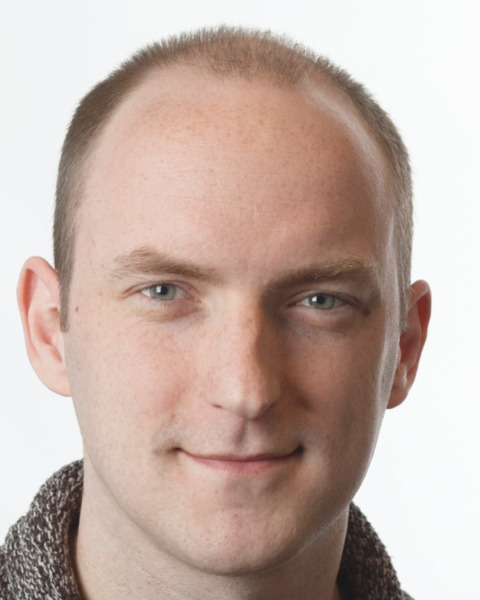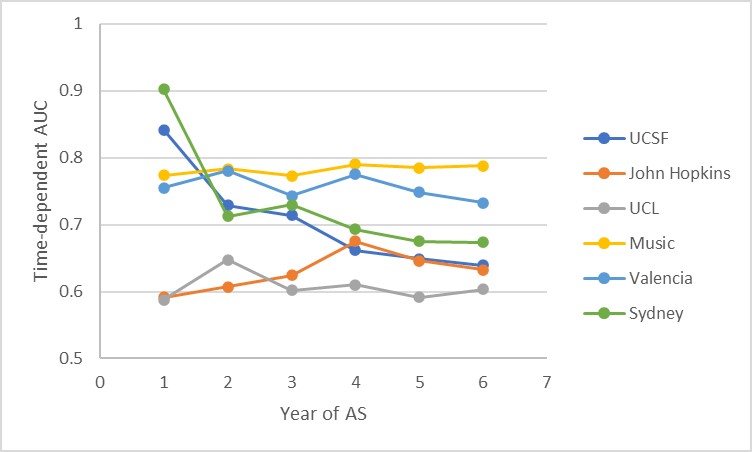Back
Poster, Podium & Video Sessions
Moderated Poster
MP43: Prostate Cancer: Localized: Active Surveillance
MP43-14: External validation of a model predicting increase in Gleason grade for men on Active Surveillance in the GAP3 consortium database
Sunday, May 15, 2022
10:30 AM – 11:45 AM
Location: Room 222
Daan Nieboer*, Ivo de Vos, Rotterdam, Netherlands, Lui Shiong Lee, Singapore, Singapore, Phillip Stricker, Darlinghurst, Australia, Mark Frydenburg, Melbourne, Australia, Anders Bjartell, Malmö, Sweden, Jose Rubio-Briones, Valencia, Spain, Axel Semjonow, Muenster, Germany, Antti Rannikko, Helsinki, Finland, Mieke van Hemelrijck, London, United Kingdom, Christian Pavlovich, Baltimore, MD, Peter Carroll, San Fransisco, CA, Monique Roobol, Rotterdam, Netherlands

Daan Nieboer
Erasumus University Medical Centre
Poster Presenter(s)
Introduction: We have previously developed a dynamic prediction model predicting increase in Gleason grade on biopsy for men with prostate cancer (PCa) treated with active surveillance (AS). The model was based on a joint model for longitudinal and survival data predicting the risk of increase in gleason grade at biopsy using PSA, change in PSA, prostate volume and whether or not a positive lesion was found on MRI. It allows for dynamic predictions, updating the risk of increase in Gleason grade as new PSA, MRI, and biopsy data becomes available. We now aimed to validate the previously developed prediction model.
Methods: External validation of our previously developed model was performed using the six largest cohorts in the GAP3 database v3.3 containing information on MRI (John Hopkins, UCSF, UCL, MUSIC, Valencia, Sydney). The time-dependent area under the ROC (AUC) was used to quantify the ability of the prediction model to predict Gleason grade upgrading using all available information at a certain timepoint.
Results: Data from 2,086 patients were used for external validation. The median age at diagnosis was 64 (59-68 25th-75th percentile) and median PSA at diagnosis was 5.4 (4.1-7.3). The overall median follow-up time was 3.7 years (range: 1.4-5.1 years). Most cohorts showed a time-dependent AUC ranging between 0.65-0.80 (Figure 1), similar to the time-dependent AUC of our at model development (range 0.70-0.75). Only the time-dependent AUC for UCL and Johns Hopkins were lower (range 0.60-0.65).
Conclusions: The discriminative ability of our developed model was confirmed at external validation. Further research should investigate possible sources of heterogeneity in the observed discriminative ability in the different cohorts
Source of Funding: This work was supported by the Movember Foundation. The funder did not play any role in the study design, collection, analysis or interpretation of data, or in the drafting of this paper. This abstract was submitted on behalf of the Movember Foundation’s Global Action Plan Prostate Cancer Active Surveillance (GAP3) consortium

Methods: External validation of our previously developed model was performed using the six largest cohorts in the GAP3 database v3.3 containing information on MRI (John Hopkins, UCSF, UCL, MUSIC, Valencia, Sydney). The time-dependent area under the ROC (AUC) was used to quantify the ability of the prediction model to predict Gleason grade upgrading using all available information at a certain timepoint.
Results: Data from 2,086 patients were used for external validation. The median age at diagnosis was 64 (59-68 25th-75th percentile) and median PSA at diagnosis was 5.4 (4.1-7.3). The overall median follow-up time was 3.7 years (range: 1.4-5.1 years). Most cohorts showed a time-dependent AUC ranging between 0.65-0.80 (Figure 1), similar to the time-dependent AUC of our at model development (range 0.70-0.75). Only the time-dependent AUC for UCL and Johns Hopkins were lower (range 0.60-0.65).
Conclusions: The discriminative ability of our developed model was confirmed at external validation. Further research should investigate possible sources of heterogeneity in the observed discriminative ability in the different cohorts
Source of Funding: This work was supported by the Movember Foundation. The funder did not play any role in the study design, collection, analysis or interpretation of data, or in the drafting of this paper. This abstract was submitted on behalf of the Movember Foundation’s Global Action Plan Prostate Cancer Active Surveillance (GAP3) consortium


.jpg)
.jpg)